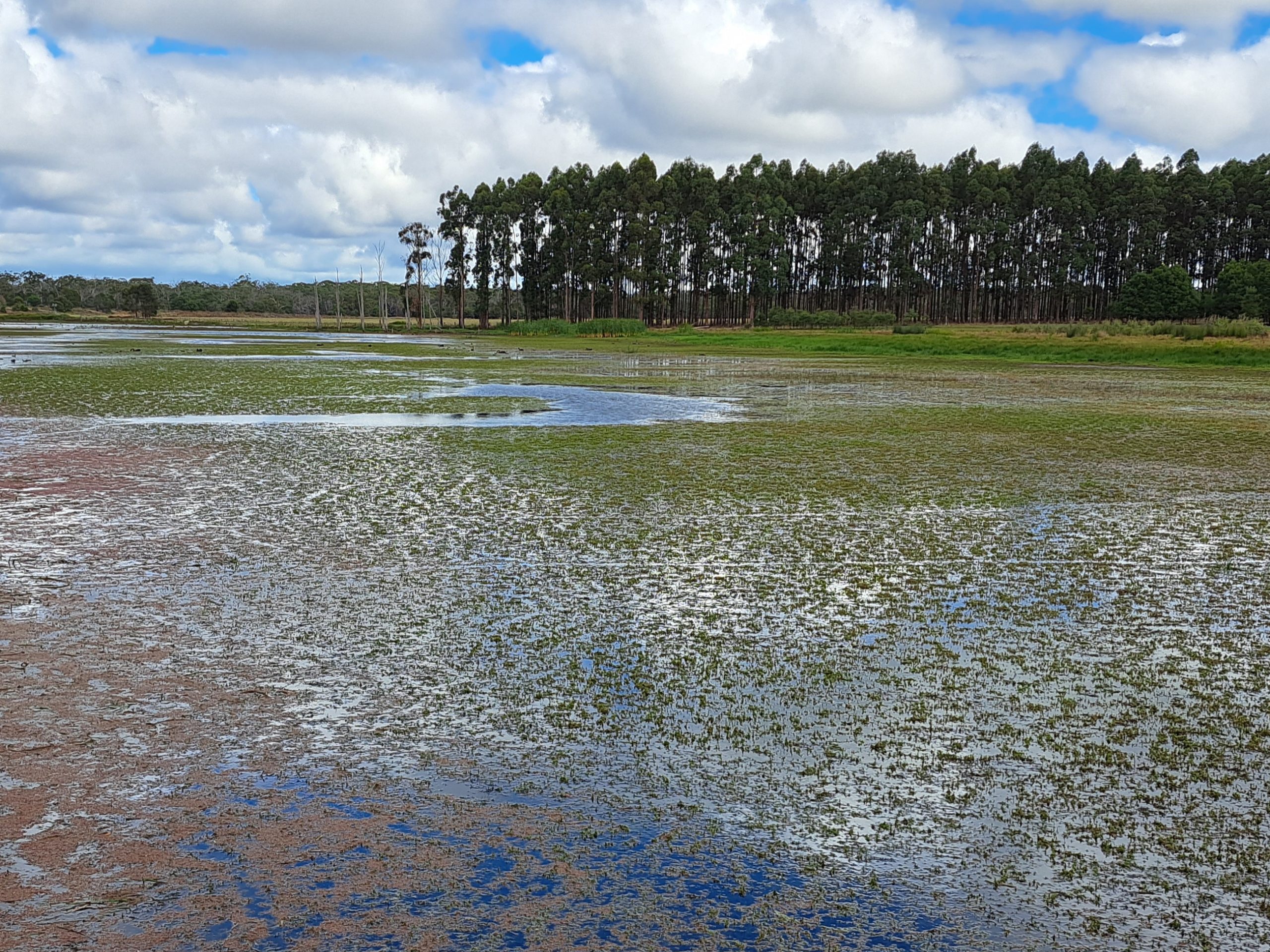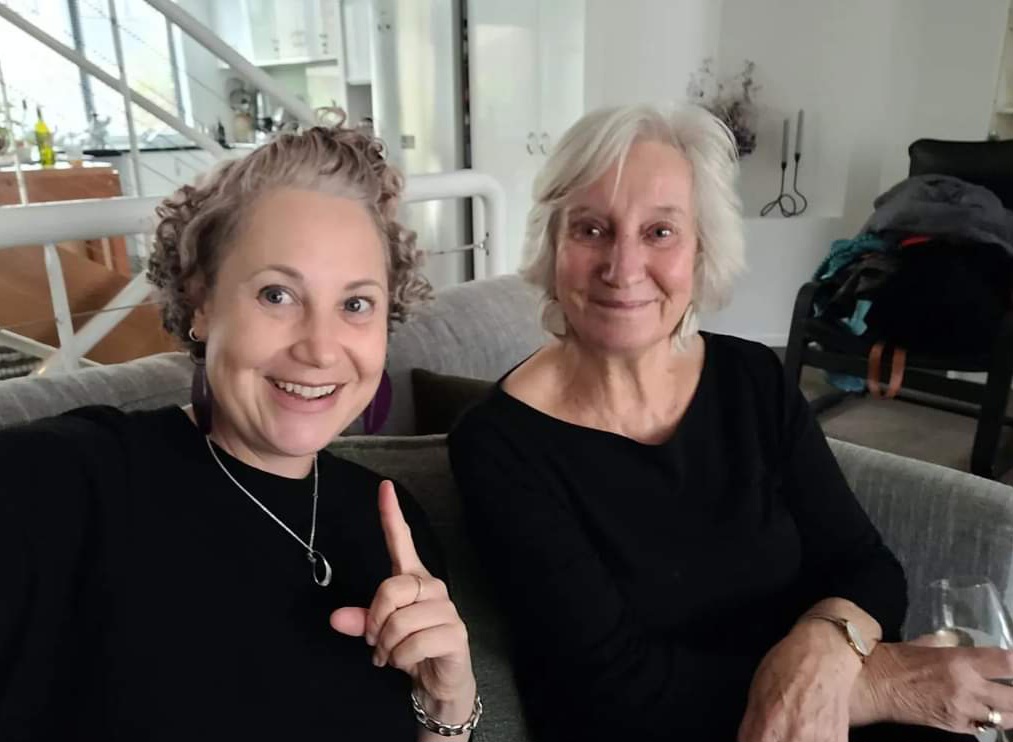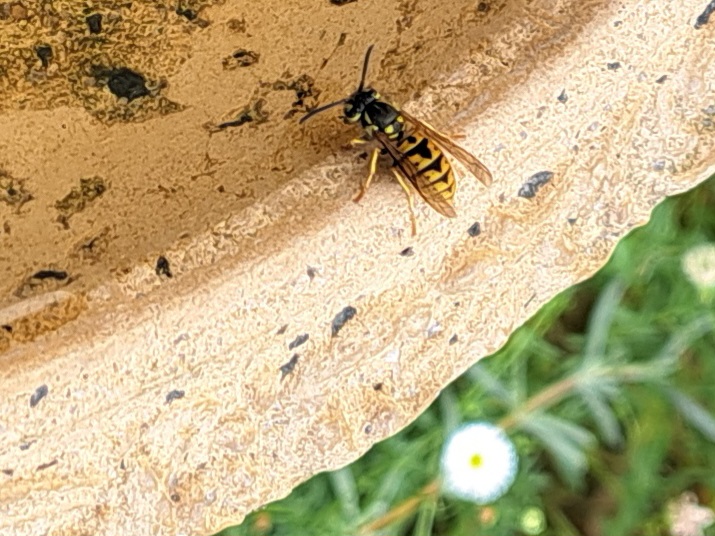Photostory
This photo was taken at Budj Bim National Park in southwestern Victoria, Australia. The park gives a compelling insight into the lives of the Gunditjmara people who lived in this landscape that was forged by a long history of volcanic activity, for many thousands of years.
Extensive volcanic plains stretch from Port Philip Bay in Victoria to South Australia, formed by the eruption of over 400 basaltic volcanoes beginning 4.5 million years ago. There are few landscapes like it in the world. It is now known that Tower Hill near Warrnambool erupted 33,000 years ago and Budj Bim (Mt Eccles) 37,000 years ago. Budj Bim has a crater lake and lava tunnels that are the source of a 50 km lava flow. This lava was responsible for damming a nearby creek to form a series of swamps and wetlands called Tae Rak (Lake Condah) that provided the Gunditjmara people with an abundance of food sources.
There are three distinct areas in the national park. The dormant volcano Budj Bim, with its crater lake teeming with fish and birds, has walks along the crater rim, a lava canal and lava caves. The second site thirty kms away is Tae Rak, an extensive wetland where water was dammed by the Gunditjmara and fish, turtles, eels, and larger wildlife were speared, trapped or snared. Amazingly, the kooyang (shortfinned eels) that lived in the wetlands of Tae Rak, have been tracked migrating 4000km to spawn in the Coral Sea near New Caledonia. After spawning, the parents die, leaving their larvae to drift on ocean currents, finally reaching the coastal waters of southern Victoria three years later. Here they change into tiny, translucent ‘glass eels’, then turn into brown ‘elvers’ when they enter estuaries in huge numbers and head toward inland habitats such as Tae Rak.
Aquatic plants provided yams, roots and tubers for roasting ─ fifty percent of Gunditjmara diet was plant-based. Water ribbons were used in salads and for basket weaving, mats, string and eel traps. These wetlands were drained and replaced by European sheep, cattle and agricultural farms, but they are now being healed by the Gunditjmara community, who have been granted water entitlements. They plan to reinstate their forebear’s aquaculture systems of weirs, damming and fish traps and to restore the eeling industry.
The third site is Tyrendarra, where there were settlement clusters of two to sixteen circular weatherproof dwellings with volcanic stone foundations and large domed rooves made from the limbs of trees and covered in mud. They were built on mounds that grew in height with each generation. A hole in the top of each roof allowed smoke to escape. European settlers and explorers recorded in words and pictures the dwellings surrounding this rich, permanent food and water source, but now there is little evidence of these structures for visitors to see.
There has been a long silence about the Gunditjmara and their way of life. Their tragic history was never part of the lessons I encountered in western district schools, but I can remember my parents speaking with respect about the Aboriginal elders who occasionally came into Warrnambool in the 1950s from nearby Framlingham Mission. For me, being aware of the traditional lives of First Nations people and seeing so clearly how much they have lost reinforces the need for a resounding YES vote in the referendum for an Indigenous voice to parliament coming up this year.
Read more about Budj Bim National Park here and the deep geographical history of the area here







Leave A Comment